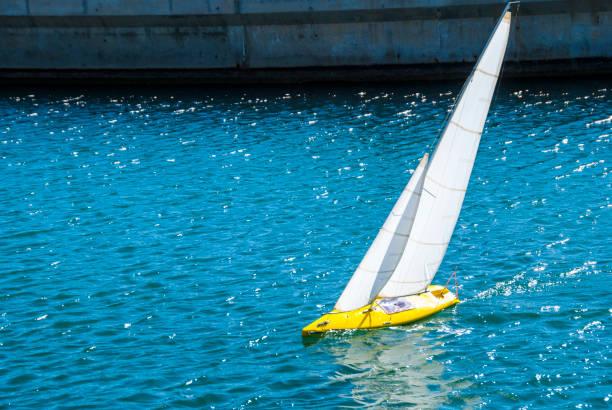
You've got an RC sailboat and want it to go faster? Me too! I know the feeling. There's nothing quite like seeing your boat pick up speed. I've spent countless hours tinkering with my own sailboat to get the most out of it. Let me share what I’ve learned.
1. Balancing the Boat
The first thing you want to check is the balance of your RC sailboat. A well-balanced boat is faster and more stable. To do this, place your boat in the water and see if it sits level. If it tilts to one side, you need to adjust the weight distribution.
- Weight Placement: Move the batteries or other weights around to get the boat sitting evenly. You might have to experiment a bit, but the goal is to have the boat float level without tipping.
- Check the Keel: Make sure the keel is straight and properly weighted. Sometimes a slight adjustment here can make a big difference.
2. Fine-Tuning the Sails
Your sails are the primary drivers of your RC sailing boat. Properly setting them up is crucial for speed.
- Adjust the Tension: The tension in your sails affects how they catch the wind. If they’re too tight, they won’t catch enough wind; if they’re too loose, they’ll flap around. Find the sweet spot where the sails are firm but not overly tight.
- Shape the Sails: The shape of the sails should be aerodynamic. Adjust the boom and the mast so the sails form a smooth curve. This helps in catching more wind and converting it into forward motion.
3. Optimizing the Rudder
Your rudder controls the direction, but it also impacts the speed. A poorly adjusted rudder can create drag and slow you down.
- Straight Alignment: Make sure the rudder is straight when the control is in the neutral position. This reduces drag and helps the boat move forward smoothly.
- Responsive Control: Adjust the servo settings to ensure the rudder responds quickly and accurately to your controls. A sluggish rudder can cause delays in turning and affect your speed.
4. Choosing the Right Conditions
Believe it or not, the conditions you sail in can significantly affect your speed. Here’s what to consider:
- Wind Conditions: Moderate wind is ideal. Too little wind, and your boat will barely move. Too much wind, and you’ll have trouble controlling the boat. Keep an eye on the weather and choose days with steady, moderate breezes.
- Water Conditions: Calm waters are best for speed. Waves and choppy waters create resistance and slow down your boat. Look for smooth, open water for the best performance.
5. Regular Maintenance
Keeping your RC sailing boat in top condition is essential for maintaining and improving speed. Here are a few maintenance tips:
- Clean the Hull: A dirty hull creates drag. Clean your boat regularly to keep it smooth and fast.
- Check the Rigging: Inspect the rigging for any wear and tear. Replace any frayed lines or damaged parts to keep everything tight and secure.
- Lubricate Moving Parts: Use a good quality lubricant on the moving parts, like the rudder and the winches. This ensures smooth operation and reduces resistance.
6. Upgrading Components
Sometimes, the best way to get more speed is to upgrade your components. Here are a few upgrades to consider:
- High-Performance Sails: Investing in high-quality sails can make a big difference. Look for sails made from lightweight, durable materials that hold their shape well.
- Better Servos: Upgrading to faster, more precise servos can improve your boat’s responsiveness and control.
- Lightweight Materials: If possible, replace heavier parts with lighter alternatives. Every bit of weight you shave off can help improve speed.
A Personal Tip
If you’re really into model ships like I am, it’s worth checking out some of the kits from Premier Ship Models. I got one of their model ship kits, and the quality is impressive. Even if you’re just starting out, having a well-made base model can make all the difference when you’re tuning for speed.
Final Thoughts
Tuning your RC sailing boat for more speed is all about attention to detail. Balancing the boat, fine-tuning the sails, optimizing the rudder, and keeping up with regular maintenance can all contribute to better performance. And don’t forget to consider the sailing conditions and potential upgrades.
It takes a bit of patience and experimentation, but that’s part of the fun. So, get out there, make those adjustments, and enjoy the thrill of a faster, more responsive RC sailboat.
